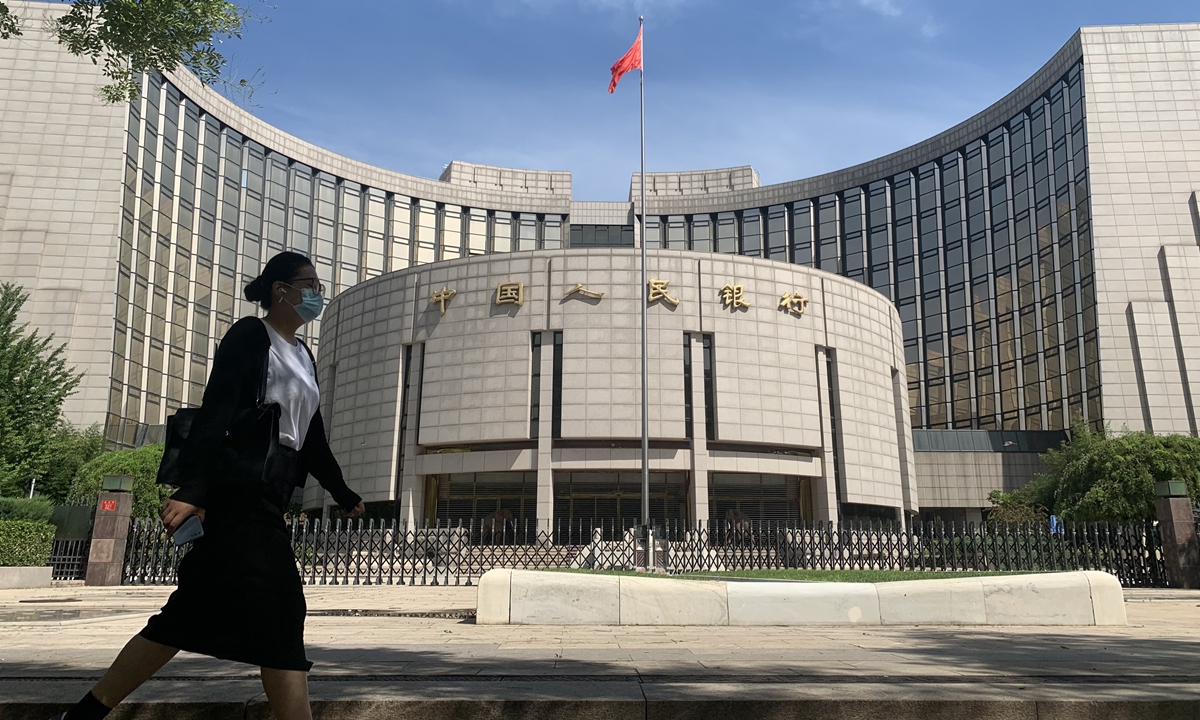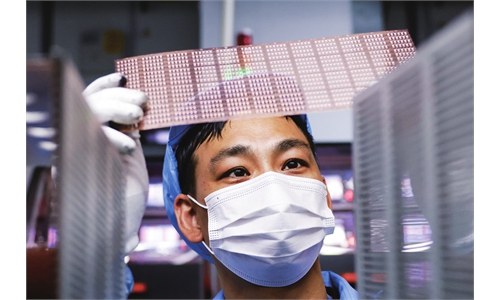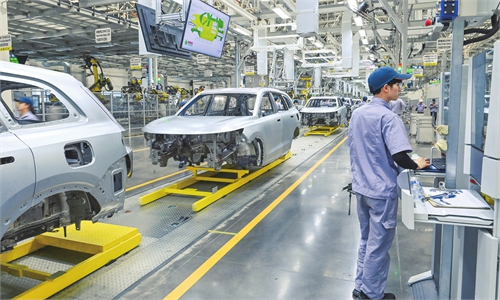
A view of the PBC building in Beijing. Photo: VCG
China's financial regulators will put more weight on supporting technological innovations, technology-driven small and medium-sized enterprises (SMEs), and high-end industrialization to provide better support for companies, a central bank official said on Thursday.
Speaking at a regular press conference, Zhang Qingsong, deputy governor of the People's Bank of China (PBC), said that regulators aim to establish a more adaptable and sustainable financial services system via deepening the structural reform of the financial supply side, and supporting the financing needs of technology-oriented enterprises, particularly SMEs.
This kind of effort will boost the formation of a technology-strong nation and achieve high-level technological self-reliance and independence, Zhang said.
"Technological innovation is an exploratory and creative endeavor. Investing in it may not always yield immediate returns, but not investing in it will definitely lead to no output," the PBC official said.
How financial institutions, financial products and the financial system support technology innovation with significant uncertainties is a crucial question that must be addressed, Zhang said.
"To meet the financing needs of early-stage technology companies, the primary approach should be equity investment. Equity investment is the main way to satisfy the capital requirements of early-stage technology and innovation companies," Zhang noted.
China experienced its fastest growth in tech innovation in the past decade, and it is now entering a new phase of achieving high-level technological self-reliance. Technological innovation is also set to become a crucial driving force for modernization.
With a boost from the financial sector, China's global innovation index ranking has risen to the 11th place, steadily and rapidly advancing toward the goal of becoming a strong technology nation, Deputy Minister of Science and Technology Wu Zhaohui said on Thursday.
As of the end of June, there were 542 companies listed on the STAR Market, with a total market capitalization of 6.72 trillion yuan ($942 billion).
The integration of innovation and resource allocation is of utmost importance as it facilitates the unlocking of dividends from government's supportive policies and stimulates the vitality of financial markets, Zhao Xijun, co-director of the Capital Market Research Institute at Renmin University of China, told the Global Times.
Whether it is through commercial banks or the securities market, both avenues can effectively support enterprises in research and development, helping them transition from lower-end to higher-end industries, Zhao said.
China has been beefing up support for R&D. The total R&D expenditure basically tripled from 1.03 trillion yuan in 2012 to 3.09 trillion yuan in 2022.
In terms of improving the overall efficiency of the nation's innovation system, the dominant position of enterprises in scientific and technological innovation has been enhanced.
For example, the number of high-tech enterprises increased from 39,000 in 2012 to 400,000 in 2022, contributing 68 percent of the R&D investment of all enterprises in the country.



